If you’ve ever scratched your head and wondered “How much pearl necklace worth?”, you’re definitely not the only one. Figuring out pearl prices can feel like trying to find your way in the dark – you’ll see prices anywhere from a reasonable $200 all the way up to a mind-blowing $300,000!
Whether you’ve been lucky enough to inherit a strand of pearls or you’re looking to buy one as a special gift, it’s super helpful to understand why some pearl necklaces are worth a small fortune while others are much more affordable. Let’s dive into the interesting world of pearl prices and find out what makes your pearl necklace worth what it is.

Understanding Pearl Necklace Value Basics
There’s no easy answer to the question of how much pearl necklace worth. You might see one priced at just $10, while another could cost as much as $100,000! That huge range can be really confusing for both buyers and sellers.
But there’s a reason for that big difference – it all comes down to a few key things working together. Think of it like a recipe – each ingredient affects the final taste. With pearls, each quality factor has an impact on how much a pearl necklace will fetch on the market today.
Price Range Overview by Pearl Type:
| Pearl Type | Typical Price Range | Premium Range |
|---|---|---|
| Freshwater | $100 – $2,000 | $2,000 – $5,000 |
| Akoya | $250 – $5,000 | $5,000 – $15,000 |
| Tahitian | $500 – $25,000 | $25,000 – $50,000 |
| South Sea | $1,000 – $50,000 | $50,000 – $300,000+ |
The wide ranges reflect quality differences within each category. A low-grade freshwater strand might cost under $200, while museum-quality examples can reach thousands.
The 7 Critical Factors That Determine How Much Pearl Necklace Worth
1. Size: Bigger Usually Means Pricier
When all other things are equal, bigger pearls are harder to find and therefore more valuable. Here’s why the size of a pearl necklace is so important when figuring out how much a pearl necklace is worth:
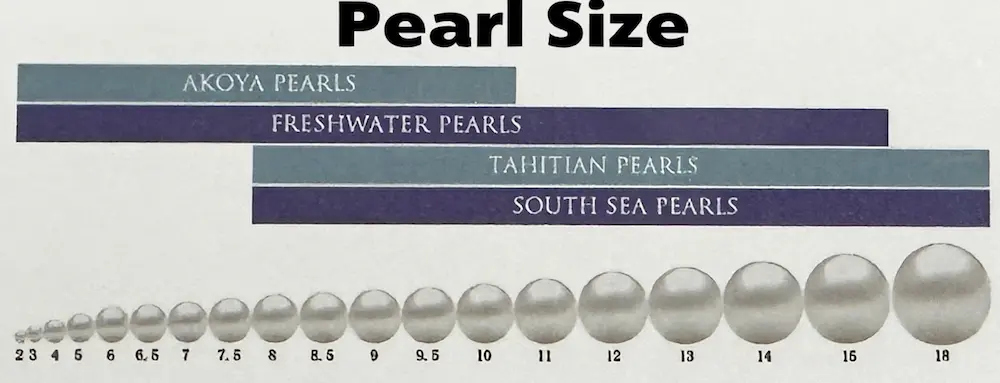
The widest part of a pearl is measured in millimeters. Every millimeter increase can have a big effect on value:
- 3-4mm pearls: A good first choice that won’t break the bank
- 4–5 mm pearls: Cheap to wear every day
- 5–6mm pearls: A good deal for everyday use
- 6-7mm pearls: Prices for beginners
- 8–9mm pearls: a popular choice in the middle range
- 10–11mm pearls: High-end category
- 12mm+ pearls: hard to find, high-end
But keep this in mind: don’t always think that bigger is better when it comes to value. A round 8mm pearl with a beautiful shine can often cost more than a larger, oddly shaped 12mm pearl with a rough surface.
2. Shape: The Round Premium
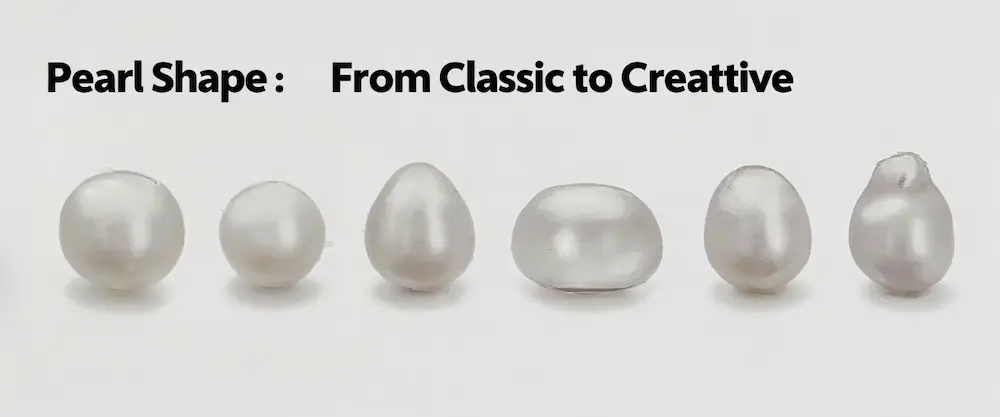
Something interesting: not all “round” pearls are the same. There are a few groups that the industry knows about:
- Round: A perfect sphere (the most valuable)
- Almost round: A little off-round (good value)
- Button: One side is flat
- Baroque: shapes that are different and irregular
- Circle: Rings around the pearl
Less than 5% of all cultured pearls are perfectly round, which is why they cost so much.
3. Luster: The Pearl’s Inner Glow
Luster might be the most important thing that affects how much pearl necklace worth. That reflective quality is what makes high-end pearls look like they are glowing from the inside.

Luster Quality Levels:
- Excellent: Sharp, bright reflections
- Very Good: Bright reflections with some softness
- Good: Somewhat bright, may lack sharpness
- Fair/Poor: Weak, hazy reflections
A Pearl Manufacturer once told me that luster can make or break a pearl’s value. Even big pearls with bad luster sell for less than small ones with great luster.
4. Pearl Types and Their Market Values
Freshwater Pearls: The Budget-Friendly Option
Freshwater pearls dominate the entry-level market when people ask how much pearl necklace worth. The price of a freshwater pearl necklace thus ranges commonly from $50 to $2,000.
These pearls offer several advantages:
- Wide variety of natural colors
- Good durability for daily wear
- Excellent value for beginners
- Available in many shapes and sizes
The downside, though? Freshwater pearls usually don’t have the perfectly round shape or the intense shine that you find in high-end saltwater pearls.
Akoya Pearls: The Classic Choice
When most people picture pearl necklaces, they’re thinking of Akoyas. A mid-range, high-quality white Akoya pearl necklace typically runs between $250 and $5,000, with brand reputation, pearl size, and rarity affecting the price.
Akoya pearls represent the sweet spot for many buyers evaluating how much pearl necklace worth:
- Classic white and cream colors
- Excellent roundness
- Sharp, bright luster
- Reasonable size range (6-9mm typically)
Akoya Quality and Pricing:
| Quality Grade | Size Range | Typical Price |
|---|---|---|
| AA | 6-7mm | $250-$800 |
| AA+ | 7-8mm | $500-$1,500 |
| AAA | 8-9mm | $1,000-$3,000 |
| Hanadama | 8-9mm | $1,500-$5,000+ |
Tahitian Pearls: Dark Beauty
Tahitian pearls add an air of mystery and elegance to the question of how much pearl necklace worth. A high-quality Tahitian pearl necklace can cost between $500 and $25,000.
These naturally dark pearls offer:
- Exotic colors from silver to deep black
- Larger sizes (8-15mm common)
- Unique overtones (peacock, green, purple)
- Limited production from French Polynesia
The rarity of truly exceptional Tahitian colors drives premium pricing for top specimens.
South Sea Pearls: The Crown Jewels
The most valuable and expensive pearls on the market today are the South Sea pearls, which naturally occur in shades of white and gold. When discussing how much pearl necklace worth at the luxury level, South Sea pearls set the standard.
Why are South Sea pearls so valuable?
- Largest natural sizes (10-20mm)
- Thick nacre for durability
- Subtle, satiny luster
- Limited cultivation areas (Australia, Philippines, Indonesia)
- 2-3 year cultivation period
A matched strand of 12mm+ South Sea pearls can easily exceed $50,000, with exceptional pieces reaching six figures.
5. Surface Perfection
The surface of a pearl can tell a story, and that story affects how much pearl necklace worth. The pearl industry uses these four grades to describe the surface:

- Clean: The surface is 95% free of any imperfections.
- Lightly Blemished: There are minor irregularities on the surface.
- Moderately Blemished: There are noticeable flaws.
- Heavily Blemished: The surface has obvious damage.
Even small blemishes can make a big difference in the value, especially when you’re talking about high-end pearls.
The Art of Matching Pearls
Putting together a beautiful pearl necklace means carefully choosing pearls that look great together in every way. When the pearls match well in size, shape, color, and luster (shininess), the necklace is worth more than if the pearls are mismatched.
This is why professionalwholesale pearls dealers spend so much time creating perfect matches. That’s also why a finished strand of pearls costs more than buying individual pearls separately.
6. Color Varieties and Value Impact
The color of the pearl has small but important effects on how much pearl necklace worth:
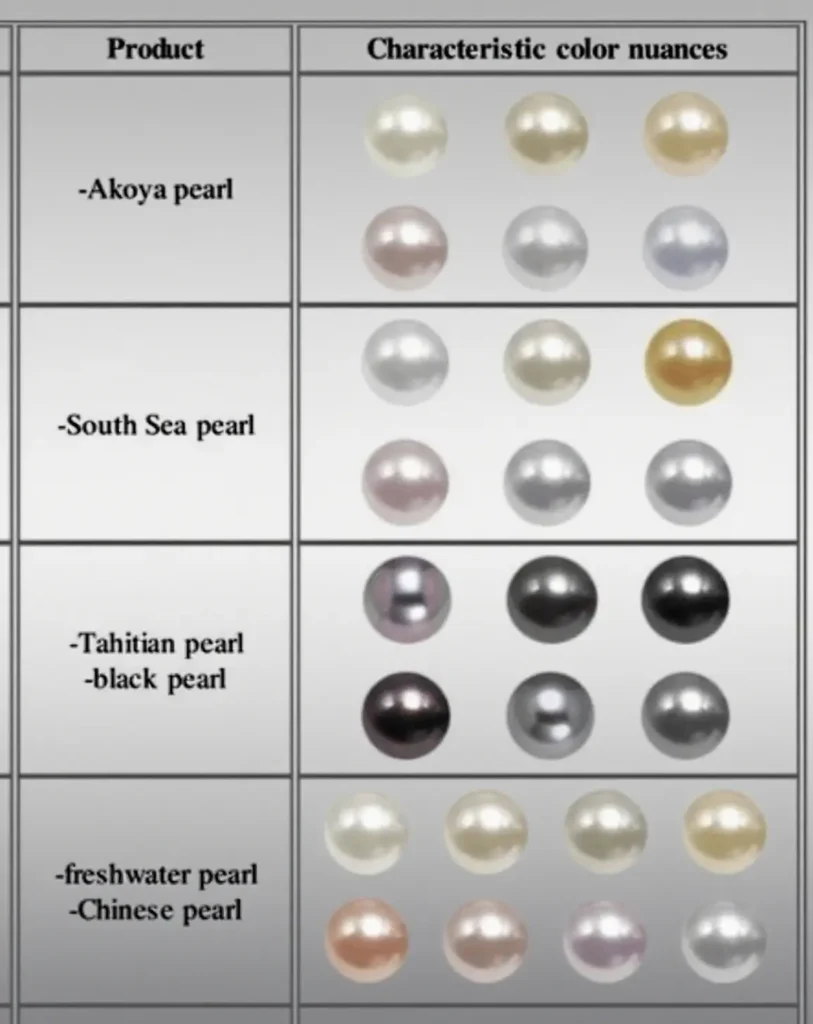
Colors that are traditional:
- White with a hint of rose: a classic that people always want
- Cream: Warm and flattering on most skin tones
- Silver-white: Looks modern and clean
Colors that are not common:
- Golden South Sea: rare and very valuable
- The Tahitian peacock is a deep green color with purple overtones.
- Chocolate Tahitian: Deep brown shades
- Pistachio Tahitian: Light green colors
When figuring out value, natural color is always more important than treatments. Pearls that have been dyed or artificially enhanced cost a lot less than pearls that are naturally colored.
7. Geographic Origins and Market Premiums
Where pearls come from affects how much pearl necklace worth:
Premium Origin Locations:
- Mikimoto (Japan): Brand premium for Akoya pearls
- Tahiti: Only source for true Tahitian pearls
- Australia: Premium South Sea pearl cultivation
- Burma: Historical source of exceptional natural pearls
Origin certificates and documentation add value, especially for high-end specimens.
Professional Appraisal and Certification
Determining exactly how much pearl necklace worth requires professional expertise. They said they will do an appraisal for $150, but only if they look at it and decide if the necklace is worth at least $1,000.
Here’s when it’s a good idea to get your pearl necklace professionally appraised:
- For insurance coverage
- When planning your estate
- If you’re thinking about selling it
- To verify that the pearls are authentic
- To assess damage
Make sure to find certified gemologists who specialize in pearls. Evaluating pearls is quite different from appraising other gemstones.
Market Trends and Future Values
The pearl market is always changing, and that impacts how much your pearl necklace might be worth over the years:
What’s Happening Now in the Pearl Market:
- People are increasingly liking baroque (irregularly shaped) pearls.
- Demand is growing, especially in Asian countries.
- There’s more focus on how sustainable pearl farming is.
- Pearl cultivation techniques are improving with technology.
Considering Pearls as an Investment: It is usually better to buy high-quality pearl necklaces from trustworthy sources than trendy fashion items. But keep in mind that pearls are natural and need to be cared for properly to stay beautiful and valuable.
Vintage and Antique Pearl Values
Is there any value in old pearl necklaces? Historical pearls present unique valuation challenges when determining how much pearl necklace worth. In 1917 jeweller Pierre Cartier bought his company’s Fifth Avenue headquarters in New York with $100 in cash and a two-strand natural pearl necklace valued at US$1 million. The same necklace was auctioned for just US$157,000 in 1957.
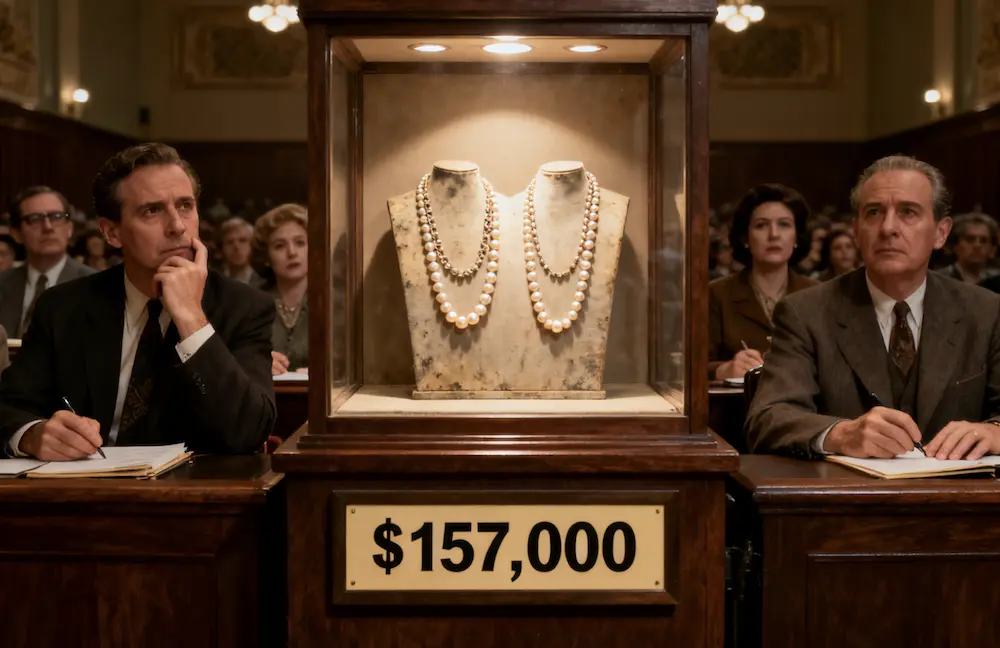
This example shows how the value of pearls can change a lot over the years. The vintage pearl market of today is all about:
Things that affect the value of vintage pearls:
- Natural versus cultured origin
- History of the item
- Condition after years of use
- Original quality factors
- How rare the specific type is
Natural Pearl Rarity
Natural pearls represent the holy grail for collectors wondering how much pearl necklace worth at auction. A strand of conch pearl necklace can fetch over US$400,000 due to their extreme rarity and unique formation process.
Care and Maintenance for Value Preservation
Proper care directly impacts how much pearl necklace worth over time:
Essential Care Tips:
- Keep them away from other jewelry so they don’t get scratched.
- After you wear them, wipe them down with a soft, damp cloth.
- Avoid putting them near perfumes and strong chemicals.
- If you wear your necklace a lot, have it restrung every two to three years to keep it from breaking.
- Once a year, have a professional clean them.
Pearls that are taken care of well stay beautiful and valuable for a long time. But if you don’t take care of them, they can get damaged and lose a lot of their value.
Making Smart Pearl Purchases
Understanding how much pearl necklace worth empowers better buying decisions:
Tips for Smart Shopping:
- Set a reasonable budget based on how you plan to wear the necklace.
- Concentrate on the quality aspects that are most important to you.
- Buy from sellers you can trust who let you return items.
- Ask for certificates or other proof for more expensive items.
- Instead of just how it looks right now, think about how much the necklace will be worth in the future.
Remember that the “best” pearl necklace is the one that fits your budget, style, and quality standards. It doesn’t have to be the most expensive one.
FAQs
How much is my pearl necklace worth?
$50–$100 k+, depending on pearl type, size, luster, and surface quality—an appraisal is the only way to know.
Is there any value in old pearl necklaces?
Usually sentimental more than cash—second-hand cultured strands fetch little unless they’re natural or designer pieces.
Are pearl necklaces worth selling?
Only if they’re top-grade Akoya, Tahitian, South-Sea, or natural; otherwise resale is modest, so wear or gift them instead.
Are pearls worth anything at a pawn shop?
Expect low-ball offers; pawn dealers pay for the clasp first, pearls second, unless they’re top-tier gems.
Conclusion: Your Pearl Value Journey
Figuring out how much pearl necklace worth involves considering a few things: size, shape, luster (that lovely shine!), the quality of the surface, color, the type of pearl, and how well the pearls match each other. While prices can range from under $200 to over $300,000, most people find fantastic options in the $500 to $5,000 range.
The trick is to figure out what’s most important to you. Whether you’re trying to figure out the worth of some pearls you inherited or shopping for a new necklace, focus on the quality factors that matter most to you. A good pearl necklace is a timeless piece that offers lasting beauty and value, going beyond whatever’s trendy at the moment.
For more information on pearl values and what’s happening in the pearl market, check out resources like the Gemological Institute of America and well-known pearl industry groups. These are great places to learn more about pearl quality standards and how the market is changing.
In the end, how much pearl necklace worth depends on finding the right mix of quality, beauty, and price that works for you.

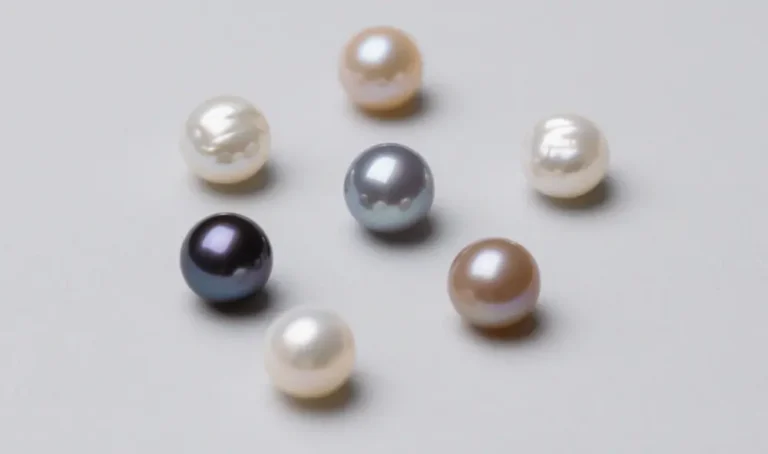


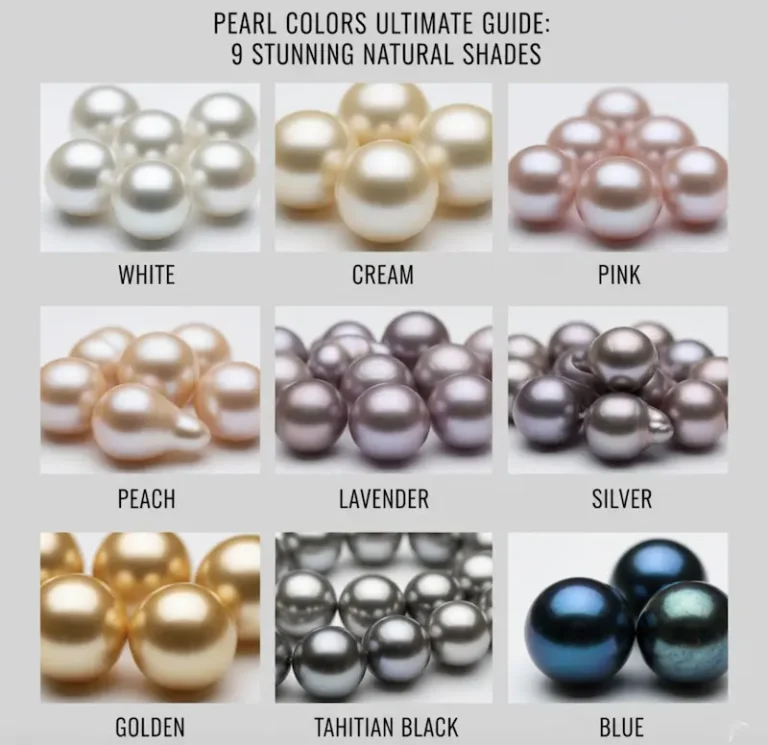



One Comment